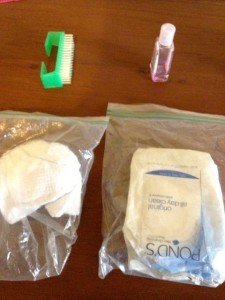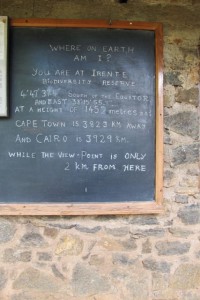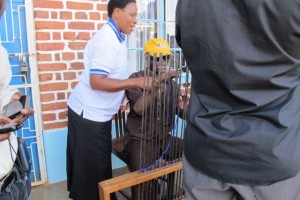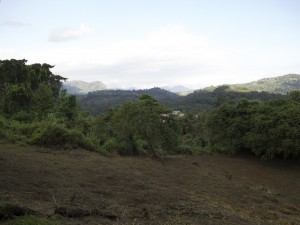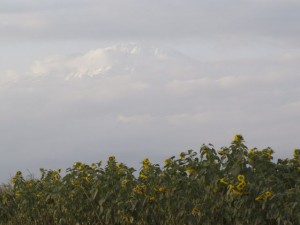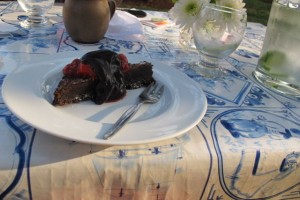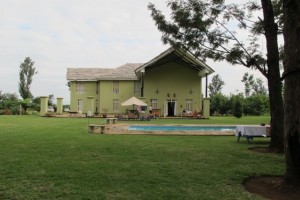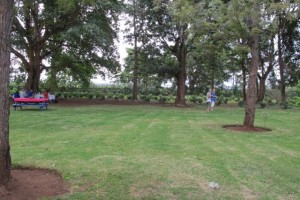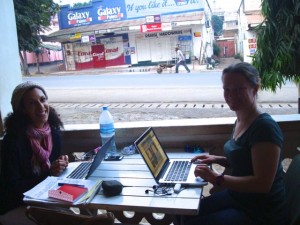WARNING: Today’s blog is a gross for some readers, but some pictures are also fun. Please proceed with caution. I would like to thank my husband Keith for inspiring this entry. He suggested that I needed to write about some of the things that are forthcoming and I decided that today’s entry would be about the gross and icky things you encounter in the Tanzania and similar countries and some of the “fun” experiences you have to pursue you research and your work. 
I was inspired by the book, That’s Gross!: Icky Facts That Will Test Your Gross-Out Factor, by Crispin Boyer.
When in Tanzania, there are many different animals that you will encounter. Some purposely on safari, and many that you thought could have left you along.
For example, during my 2007 trip, I met this lovely tortoise on an island of the coast of Zanzibar. I was a little worried he/she might eat my hand, but they were very beautiful and fun to watch and encounter so closely.
In Zanzibar, we also visited seaweed farms on the edge of the ocean and found this baby starfish in the water.
On the other hand, in Lushoto in 2007, these flying cicadas invaded the school during the months of May and June. I used to have conversations with them at night in my room trying to get them not to land on my bed or my head. Luckily, this was not a normal occurrence. They exist there normally, but not at this high population every year. The children collected them and fried them for a snack. I tried one or two. They were not that tasty and certainly too small for any real fortification.
I ate them in the name research and repertoire building with the people at the Rainbow School. I also went fishing on that trip for my research. This was not line and pole fishing. They drag the net along the bottom of the dammed pond and then pick out the fish that are big enough to eat and toss the rest back.
Before going in, you have to put Vaseline all over your exposed arms and legs to discourage the fish from biting and nibbling you. I guess they don’t want you to have a full body cleaning like the fish pedicure I have seen advertised. The water was very cold.
After finishing, they cleaned and scaled the fish and the children and staff ate it for lunch the next day.
Sometimes you wish the bugs would just leave you alone. I got a Nairobi fly bite on my leg a few weeks ago. The Nairobi fly is actually a beetle that crawls into your clothing or under a watch band or ring. When you feel it you generally swat at the spot and that squishes the bug and then it emits a chemical that burns your skin and hurts and itches a lot. If you touch the chemical area while still infected, you can spread it to other parts of your body. It will eventually heal as you can see below, but you are left with a battle scar from your trip. Keith was bitten by a Nairobi fly under his wedding ring in 2008 and still has his scar.
And then the preventative things sometimes get you too. This mark on my arm is from some of my vaccinations for my trip and it had never healed completely.
Finally, this country has a lot of clay, mud and dirt, depending on if it is a dry or rainy season. Much of it is this red color seen used to build this traditional village home from a village near Lushoto.
When I go running in the mornings, I come back covered in a layer of red dust and my white socks are not white anymore. Another side effect of all the dust is that when you blow your nose, even for routine cleaning when you don’t have a cold, your boogers are a dark red or usually look more black. You can turn an entire Kleenex black in minutes trying to rid yourself of the dust and dirt mucous boogers. In the science book for class 1, children learn that the nose is used to smell but it is also used to keep clean air coming in and out of your body and so your little hairs in your nose catch all that dust. Luckily for all of you, I don’t have a picture of my black boogers. Riding on the bus as I did on my way to Lushoto, guaranteed black boogers in the evening.
Finally, here is my daily survival kit. I carry in my bag everything except the nail brush. Of course I have cipro for stomach emergencies and neosporin for cuts and other things. But, these items are essential.
The hand sanitizer is critical for a variety of reasons but particular for cleaning your hands after using the bathroom when there is no water. The ziploc bag of napkins is your travel toilet paper for local bathrooms. The gentle face cleaning wipes work to clean the dust off your face, clean your computer screen, and work on your hands to clean them as well. The nail brush is used once or twice daily, because my nails are almost always getting dirty with dust over the course of a day, but don’t like them so short that I would bearily have a nail bed. I am glad I have never bitten my nails, because I can’t imagine what might be under there.
We all must do many things to become community members and support the furthering of our research and our understanding of the community and people we work with. In Tanzania, that includes eating a lot of food when you are hosted at people’s homes, including things you may not want to, like the time I ate a chicken liver. In often times means trying new experiences such as fishing in the pond with nets, but it can be fun as that was.
While many of these experiences or “opportunities” may seem uncomfortable at first or something you wouldn’t do, but I can’t tell you how happy I am that I was able to step out of my comfort zone because it made all the difference in connecting with people and building relationships with people I will have for the rest of my personal and professional life. You never know where black boogers, fried bugs, and a few scars might lead.









